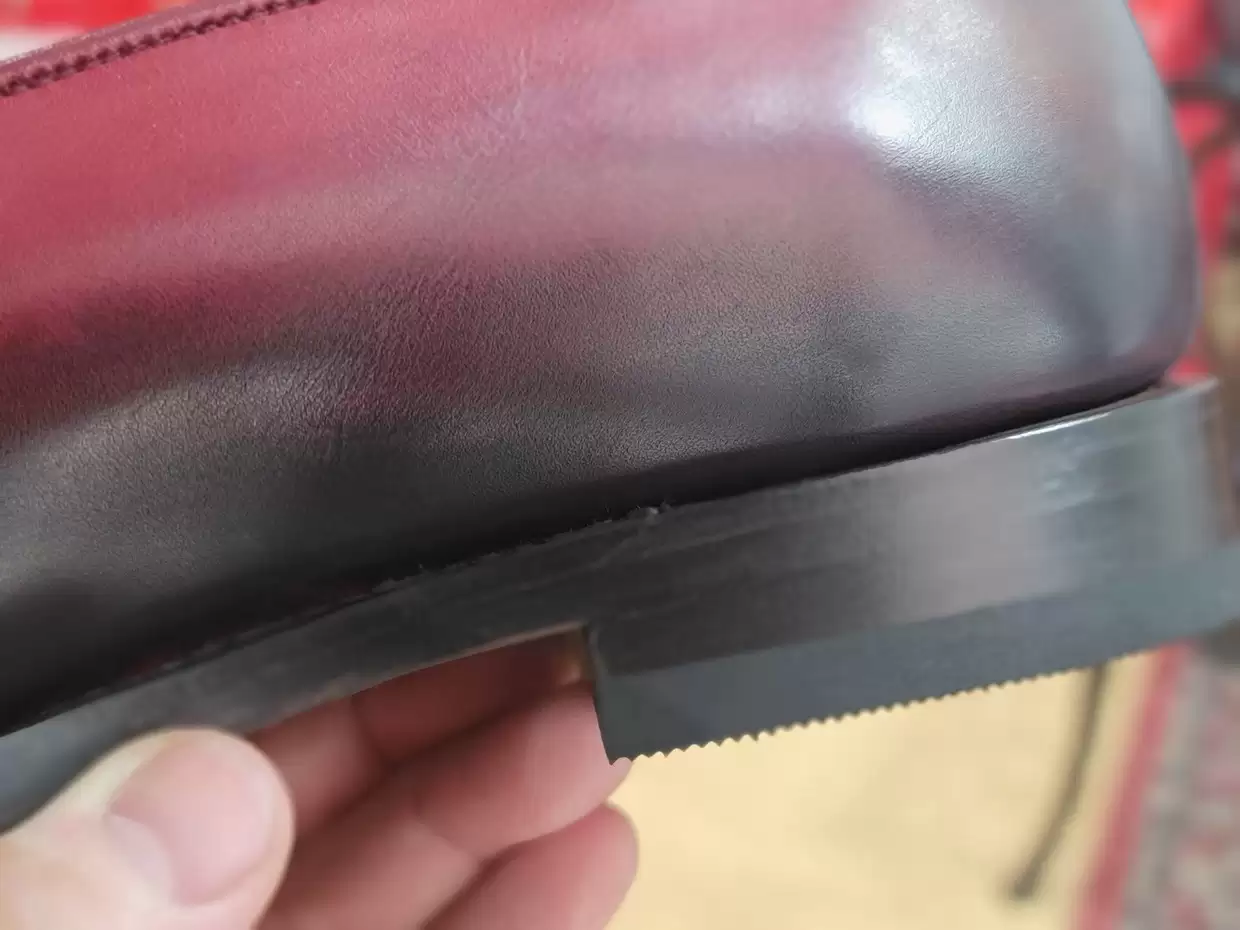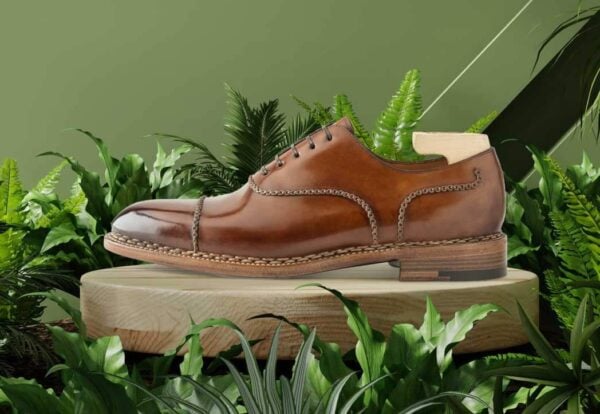
With the influx of Spanish private labeling (factories making for other brands) and Latin American shoemakers (Mexico, Argentina, Colombia etc), I am starting to see a lot of questions/complaints about the joining of the welt on Goodyear welted shoes. Prior to Instagram and Facebook, I felt like the world of shoes might have been so much more simple. But at the same time, that simplicity also caused a lot of misunderstandings about the reality of shoemaking. I will use America as the example here as I believe most of these misconceptions start here being one of the largest consumer markets for dress shoes.

Before globalization became a thing and we all just shopped at our local mall, most of what you found at the high-end American department stores (which were your only point of sourcing fine dress shoes) were Italian dress shoes. And the reality is that 20 years ago, Blake Stitched shoes ruled the marketplace in the US, and really still do, to be honest. Now your average person has no clue what a shoe welt is. Nor do they even know what goodyear welted is. But they know Italian shoe finishing because chances are they have seen it in a Santoni or Ferragamo shoe. And Italian shoe finishing is often flawless. And mainly because it is all blake, which as no welt. And being that it has no welt, there is a flawless look at where the heel is met by the sole. So, people using this memory get freaked out when they see what looks like a cut in the sole (really the welt). Many go online and start panicking that their shoe is flawed. Well, it is not. Not even close. So, lets explain what a welt is and how it is applied to your shoe.

First off, a welt is a strip of leather sewn to the insole and upper (and later sewn to the sole) that can either go all of the way around the shoe (360 degree welt) or in the case of most high-end dress shoes, usually goes from joint to joint (270 degree welt). Now, you will imagine that this welt has two ends and those ends need to meet somewhere and/or be connected to a different piece of leather (know as the rand – see video below). When cutting those ends to be joined it is usually cut at a 45-degree angle, not a vertical one. The other piece of leather (or end of welt) is also cut at that same angle so they join together as neatly as possible. When these two pieces join, you get an obvious line that signifies their meeting. Now if these angles are not cut perfectly, you start to get more untidy-looking joinings.
Now, these joinings can be later manipulated (tidied up) by the person that trims the sole as well as finishing department. And that is usually what starts to separate different degrees of craftmanship, countries of origin, and price points. One of the main reasons you are paying for expensive footwear is the capabilities of clean finishing. The higher you go in price, usually the tidier the finishing is. When you look at handmade shoes by Japanese bespoke shoemaking you would be hard pressed to find any indications of a cut, slit, joining etc. as they are the masters of finishing. But it is the opposite when it comes to a lot of Spanish shoemakers and even more so South American shoemaking. It is simply not what they value. Their intentions are to make solid shoes for a solid price, not to make you the best shoe in the world for under $400. That doesn’t exist. And they are also in the market of utilizing all of the materials possible. Not creating waste that most of the high-end makers do, and charge you for. Believe that.

So, what piqued my interest in writing this post, was a gentleman (@theshoeenthusiast on IG) that shared the welt joining of one of his Goodyear welted Mexican Made boots by Taylor Stitch on a Facebook forum, asking if what he noticed was ‘normal’ or ‘acceptable’. He felt its look indicated a flaw and asked for guidance. His way of going about it was more honorable because most forum-type individuals immediately go on there and start slagging off the company/making, looking for a moral pat-on-the-back, all while not having a clue about anything nor the people agreeing. Now, there were some commentators there that were automatically spewing garbage but thankfully one very well-respected and knowledgable cobbler helped shed light on the realities of shoemaking. Now the OP (original poster) I believe understood after hearing the cobbler’s opinion and learned about it and I felt that this topic needed some exposure as we will see more and more of this issue and it is best that we are all prepared for that.




The reality is that welt leather is made in very long, almost endless strips. Just look at the picture above. Therefore, it has to be spliced. Now, imagine, this is not a perfect robot-like situation as shoe sizes vary which means that welt splices will too. And they are not always cut with Samurai-Sword precision and sometimes are unkempt looking. And when you get shoes from certain countries, they are not there to tidy that up in order to look like your fine Gaziano & Girling style of shoemaking. It’s simply not what you are paying for. So, sometimes, the joining of the welt is not that nice looking. But that does not mean it is flawed, in error, bad quality, or any of that nonsense. It just means that you are paying for a solid shoe and not flawless finishing. Now, in extreme cases, that welt splicing will require more than one per shoe/boot, as is the case with the boot in question. You can see this in the photos where they spliced the joint as well as the toe. Now this is nearly unheard of in European making, but according to one poster in this photo comment, has been seen many times in shoes coming out of Leon, Mexico. And more like than not, it is because they are not there creating wastage. They are there to use all of the materials possible. And in 10 pairs, I imagine maybe 1 or 2 will come out like this. And if you happen to get it, it simply makes you unfortunate, but not justified in claiming flaws or asking for paid returns. If all shoes were always flawless we would have no distinction in prices. Yet we do, and most often do to the cost of labor and time spent on said labor because leather stays constant across the board.


When you see things like this, especially when you are buying shoes from a country not known for providing flawless finishing, such as England or Italy, then manage those expectations because if something is structurally sound yet simply not flawlessly attractive, it does not make it at fault. I won’t lie. It is not pretty at all. But I would not really ‘not-expect’ that from shoes made in Mexico. And that is not a knock on Mexican shoemaking. That is because my expectations of their values in shoemaking are realistic. And until they change their own values, this won’t change. We buy shoes to be worn, not to put on mantlepieces. And more often than not, we do more damage on our first outing than anything we moan about. So next time you buy a pair of shoes from some new brand that is making the shoes out of some country not rooted in flawless finishing, bear that in mind when critiquing it. We must continue to manage out expectations as consumers as constantly expecting perfection is a fool’s game.
Here, below, you can see a selection of welt joining from my own brand. I intentionally tried to find ones more unkempt as it happens. The reality is that the majority look like the above pair but even the Spanish often leave this untidy and with divets and bad joining. It’s a part of what makes Spanish shoes more favorable in price. That is the reality of shoemaking. More time spent perfecting details equals higher pricing. It’s simple math.






















Very informative. I have always thought that quality welted shoes had the 360 degree welt – didn’t know that some quality shoes are made with 270 degree welts.
Most quality shoes are 270
most proper dress shoes use 270 welts. They almost only do 360 when adding a stormwelt or norwegian welt. 360 welts are too heavy for luxurious looks
Thank you once again for shedding light and clarity on a subject too many just rant about without understanding or proper knowledge. And especially so to explain what to expect from certain shoes, makers and the reasons why. Much needed and much appreciated.
my pleasure Mark, thank you for reading and for commenting.
Hola amigo, me gustaría compartir mis conocimientos en diseño, modelaje y fabricación de calzado. Tengo escuela italiana y treinta años de experiencia. Si gustas ver mi trabajo solamente solicita mi portafolio o vídeos de mis zapatos
Ripper article and thoroughly agree.
Thank you!
I am an exotic shoe enthusiast and own several pairs. I’m new to this blog and would love to have the exotic shoe conversation with anyone interested.
Those are some pretty tidy untidy “unkempt” welt joints!